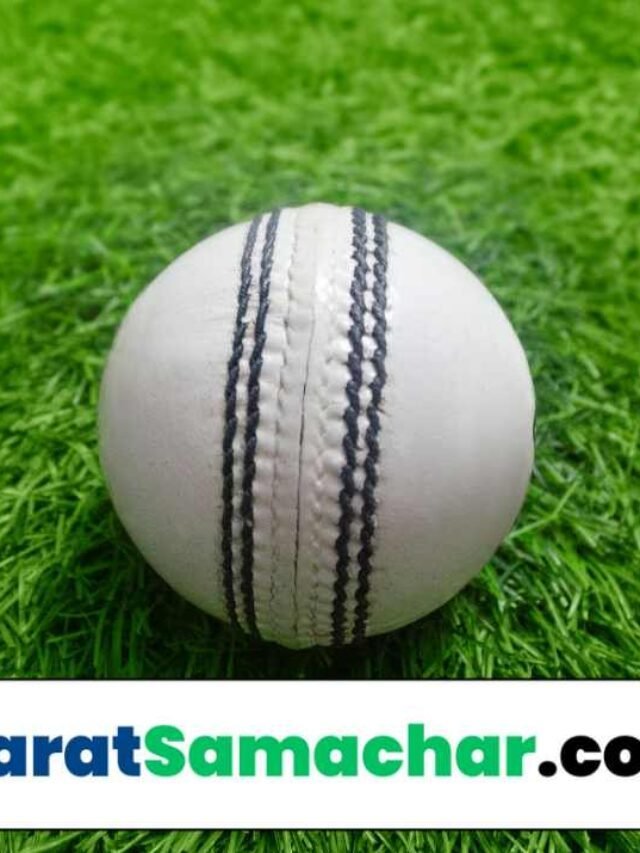India is a land of remarkable linguistic diversity, with over 1,600 spoken languages and dialects. This rich tapestry of languages reflects the country’s complex history, culture, and regional identities. This guide explores some of the major languages spoken in India, their significance, and the regions where they flourish.
Overview
- Status: Hindi is one of the official languages of India and serves as a lingua franca for millions across the northern and central regions.
- Script: Written in the Devanagari script, Hindi is derived from Sanskrit and has been influenced by Persian, Arabic, and English.
Cultural Significance
- Literature: Hindi boasts a rich literary tradition, with prominent poets and writers such as Premchand and Harivansh Rai Bachchan.
- Media: Hindi cinema (Bollywood) and television plays a crucial role in popularizing the language, reaching audiences worldwide.
2. Bengali: The Language of the East
Overview
- Status: Bengali is the second most spoken language in India and is primarily spoken in West Bengal and Tripura.
- Script: Written in the Bengali script, it has a rich phonetic structure.
Cultural Significance
- Literature and Arts: Bengali literature has produced Nobel laureate Rabindranath Tagore, whose works encompass poetry, music, and dance.
- Festivals: The Bengali New Year (Pohela Boishakh) and Durga Puja are celebrated with great fervor, showcasing the language’s cultural heritage.
3. Tamil: The Ancient Language
Overview
- Status: Tamil is one of the oldest living languages in the world and is an official language in Tamil Nadu and Sri Lanka.
- Script: Written in the Tamil script, it has a unique grammar and vocabulary.
Cultural Significance
- Literature: Tamil literature dates back over 2,000 years, with classical works like the Thirukkural by Thiruvalluvar.
- Cultural Heritage: Tamil Nadu is known for its rich traditions in music (Carnatic), dance (Bharatanatyam), and temple architecture, all intricately tied to the language.
4. Telugu: The Language of the South
Overview
- Status: Telugu is predominantly spoken in Andhra Pradesh and Telangana.
- Script: Written in the Telugu script, it is known for its melodious sound.
Cultural Significance
- Literature and Cinema: Telugu literature flourished with poets like Nannayya and Tikkana. The Telugu film industry (Tollywood) is also one of the largest in India, producing numerous popular films.
5. Marathi: The Language of Maharashtra
Overview
- Status: Marathi is the official language of Maharashtra and is spoken by millions.
- Script: Written in the Devanagari script, it shares historical roots with Hindi.
Cultural Significance
- Literature: Marathi has a rich literary tradition, with renowned authors like P. L. Deshpande and Vijay Tendulkar.
- Festivals: Ganesh Chaturthi and other regional festivals highlight the cultural vibrancy of the Marathi-speaking community.
6. Gujarati: The Language of Business
Overview
- Status: Gujarati is spoken primarily in the state of Gujarat and by the Gujarati diaspora worldwide.
- Script: Written in the Gujarati script, it has a unique phonetic structure.
Cultural Significance
- Literature: Notable figures include Mahatma Gandhi, who wrote extensively in Gujarati. The language has a vibrant tradition of poetry and storytelling.
- Culinary Heritage: Gujarati cuisine is celebrated for its variety, with distinct dishes like dhokla and the traditional thali.
7. Punjabi: The Language of the North
Overview
- Status: Punjabi is primarily spoken in Punjab and by the Sikh community worldwide.
- Script: Written in the Gurmukhi script, it is known for its rich sound system.
Cultural Significance
- Music and Dance: Punjabi folk music and dance (Bhangra and Gidda) are integral to the culture, often celebrated in festivals and gatherings.
- Literature: Punjabi literature has a strong tradition, with influential poets like Waris Shah and Amrita Pritam.
8. Urdu: The Language of Poetry
Overview
- Status: Urdu is widely spoken in several states, including Uttar Pradesh, Telangana, and Jammu & Kashmir.
- Script: Written in a modified Perso-Arabic script, it shares vocabulary and cultural elements with Hindi.
Cultural Significance
- Literature and Poetry: Urdu is renowned for its poetic tradition, with celebrated poets like Mirza Ghalib and Faiz Ahmed Faiz.
- Cultural Festivals: Urdu literature is celebrated through events like the Ghalib Festival, highlighting its enduring legacy.
Conclusion
India’s linguistic diversity is a testament to its rich cultural heritage and history. Each language carries its own unique stories, traditions, and artistic expressions, contributing to the country’s overall identity. Understanding and appreciating this diversity fosters a deeper connection to India’s multifaceted society, where languages serve as bridges that unite people across regions, communities, and cultures. Whether through literature, music, or everyday conversation, the languages of India continue to evolve while preserving the essence of their ancient roots.
Introduction to India’s Linguistic Diversity
India is renowned for its remarkable linguistic diversity, boasting a tapestry of languages that reflect the country’s rich cultural heritage. With over 1,600 distinct languages spoken across its vast geographical expanse, India stands as one of the most linguistically varied nations in the world. This linguistic plethora is not merely a representation of communication; it forms an integral part of the social identity and cultural framework of its diverse communities.
The significance of languages in India transcends mere verbal communication; they embody the traditions, histories, and values of different ethnic groups. In various regions, languages such as Hindi, Tamil, Bengali, Telugu, and Punjabi serve as not only tools for daily conversation but also as vessels of literature, folklore, and artistic expression. Furthermore, languages act as unifying elements that foster community bonds while simultaneously distinguishing individual groups within the larger Indian ethos.
Understanding India’s linguistic diversity is crucial for appreciating the complexity of its identity. Each language encapsulates unique worldviews and experiences, influencing social interactions, educational practices, and information dissemination. The multilingual nature of the country encourages mutual respect among its citizens, as understanding different languages fosters deeper cultural appreciation and social cohesion.
The coexistence of numerous languages also reflects historical migrations, trade patterns, and colonial influences, thus contributing to the intricate mosaic of Indian society. It is essential to recognize that this diversity is not static; it evolves with time, absorbing influences from various cultures and adapting to contemporary social dynamics.
In today’s India, linguistic understanding facilitates effective communication among its populace, promoting unity in a country renowned for its multiplicity. Grasping this linguistic landscape is vital for both residents and visitors, as it reveals the underlying connections that unify India’s diverse populace.
Overview of Major Language Families in India
India is home to a vast array of languages that can be primarily categorized into four major language families: Indo-Aryan, Dravidian, Austroasiatic, and Tibeto-Burman. Each of these families possesses distinctive characteristics and encompasses numerous languages spoken across the country.
The Indo-Aryan language family is the largest in India, consisting of languages spoken predominantly in the northern and western regions. It is a subset of the larger Indo-European family. Major languages within this group include Hindi, Bengali, Urdu, Punjabi, and Marathi. These languages share a considerable amount of vocabulary and linguistic features, making them somewhat intelligible to speakers of related languages.
The Dravidian language family is predominantly spoken in southern India, comprising languages such as Tamil, Telugu, Kannada, and Malayalam. This family is characterized by agglutinative grammar and a rich literary tradition, especially seen in Tamil, which boasts ancient texts and a long-documented history. Dravidian languages tend to have a distinct phonetic system, quite different from their Indo-Aryan counterparts.
Austroasiatic languages, though lesser-known, play an important role in India’s linguistic diversity. This family includes languages such as Khasi and Santali, spoken primarily in the eastern regions of the country. These languages exhibit unique characteristics and are significant for understanding the indigenous cultures of the area.
Lastly, the Tibeto-Burman language family includes languages primarily found in the northeastern states of India, such as Manipuri and Bodo. These languages reflect the rich cultural heritage and linguistic diversity of the tribal communities in this part of the country.
Each of these major language families contributes to the intricate tapestry of India’s linguistic landscape, representing not only modes of communication but also cultural identity and heritage.
Hindi: The National Language and Its Variants
Hindi, recognized as the official language of India, has evolved over centuries and reflects the rich tapestry of the country’s socio-cultural landscape. Its roots can be traced back to the Indo-Aryan languages, with significant influences from Sanskrit, Persian, Arabic, and English due to historical events such as invasions, trade, and colonialism. This evolution has led to the emergence of various dialects and regional variants, which enrich the heterogeneity of the language.
In terms of regional variants, Hindi is spoken in several forms across different states. For instance, spoken Hindi in regions like Uttar Pradesh, Bihar, and Madhya Pradesh exhibits distinct phonetic and lexical characteristics. Additionally, dialects such as Braj Bhasha and Awadhi are integral to Hindi literature and culture, showcasing the language’s diversity. The variant of Hindi known as Standard Hindi is largely based on the khariboli dialect and serves as a lingua franca among speakers of different regional languages, promoting communication and understanding across diverse communities.
Hindi’s role extends beyond mere communication; it is pivotal in the education systems of many states, and its significance is further emphasized in governance, media, and cultural expression. Government documents, legal statutes, and educational curricula often utilize Hindi to reach a wider audience, aligning with the objective of inclusivity in a multilingual nation. Moreover, Hindi literature, enriched by poets and novelists, continues to thrive, influencing Indian cinema and multimedia platforms. Its cultural resonance creates a unifying force for a linguistically diverse population. Moreover, as an instrument of national identity, Hindi embodies a myriad of voices and viewpoints, contributing significantly to the country’s dynamic cultural landscape.
Tamil: A Glimpse into One of India’s Oldest Languages
Tamil is not just a language; it is a vibrant tapestry of history, culture, and identity. As one of the oldest living languages in the world, Tamil has a recorded history that extends over 2,000 years, placing it among the ancient Dravidian languages. Its earliest inscriptions are found on pottery and stone, dating back to the 3rd century BCE, and it has gracefully evolved while retaining its classical roots. Today, Tamil is spoken by millions, primarily in the Indian state of Tamil Nadu and in various regions across the globe where the Tamil diaspora resides.
The richness of Tamil extends beyond mere conversation; it boasts an extensive body of classical literature, including the renowned Sangam literature, which consists of poems that reflect the social, economic, and political spheres of ancient Tamil life. This literary tradition has greatly influenced the language, giving it a depth and character recognized and celebrated in the realm of world literature. Notable poets such as Tiruvalluvar and his work, the Thirukkural, remain revered for their philosophical insights that bridge moral and ethical teachings, resonating with audiences even today.
The influence of Tamil permeates various artistic domains, particularly in the realms of music and dance. The classical music form of Carnatic music is deeply rooted in Tamil culture, characterized by intricate melodies and rhythmic patterns that evoke profound emotions. Likewise, traditional dance forms, such as Bharatanatyam, often narrate Tamil historical and mythological stories, showcasing the language’s integral role in performing arts. Furthermore, in contemporary contexts, Tamil continues to wield significant influence through cinema and media, contributing to its widespread popularity and relevance beyond regional boundaries.
In conclusion, the resilience and adaptability of Tamil as a language, combined with its rich cultural heritage, make it a significant facet of India’s diversity. Its literature, art, and continued global presence highlight its status as a living testament to the ancient civilizations from which it originated.
Regional Languages: Celebrating Local Dialects
India is a mosaic of diverse languages, with each region possessing its own unique dialects that reflect its rich cultural heritage. Among the myriad languages, regional languages such as Bengali, Punjabi, Gujarati, and Malayalam exemplify the country’s linguistic plurality. These languages not only serve as a means of communication but also contribute significantly to the cultural identity and pride of the communities that speak them.
Bengali, for instance, widely spoken in West Bengal and Bangladesh, is known for its poetic and literary richness. It boasts an extensive literary tradition, having produced renowned figures like Rabindranath Tagore and Kazi Nazrul Islam. The nuances of the Bengali language, including its script and phonetics, allow for a melodious expression of emotion and thought, helping maintain the region’s unique cultural heritage.
Similarly, Punjabi is a vibrant language that thrives in the northern state of Punjab. It is renowned for its folk music, vibrant festivals, and a robust tradition of storytelling. The Gurmukhi script, used for writing Punjabi, is a testament to the region’s distinct cultural identity. Punjabi is frequently associated with themes of valor and spirituality, which further deepens the speakers’ regional pride.
In the western state of Gujarat, Gujarati holds a special place with its distinct linguistic features and a significant body of literature. This regional language is celebrated for its contributions to the performing arts, especially in theatre and folk dance forms. Innovators like Mahatma Gandhi have also contributed to its prominence on national and global platforms.
Moreover, Malayalam, the language spoken in Kerala, showcases a unique script and a deep-rooted literary culture. It has developed a rich tradition of poetry and storytelling, supplemented by cinema that often emphasizes local dialects. Each of these languages brings with it a sense of local pride and identity, showcasing the tremendous value of regional dialects in India’s linguistic landscape.
The Role of Language in India’s Culture and Identity
Language in India serves as more than just a means of communication; it is a vital component of the country’s diverse culture and identity. With over 1,600 languages spoken across its vast landscape, India showcases a remarkable linguistic tapestry that reflects various regional, ethnic, and religious identities. Each language is steeped in history, often serving as a repository of knowledge, traditions, and customs particular to its speakers. This deep-rooted connection between language and culture manifests prominently during festivals and rituals.
For instance, in the celebration of Pongal in Tamil Nadu, the local language plays a crucial role as it encapsulates the traditions and values of the community. The songs and prayers recited during this festival convey messages of gratitude and reverence, illustrating how the Tamil language enriches the overall cultural experience. Similarly, during Diwali celebrations, Hindi, the official language of India, is essential in uniting people through shared narratives, songs, and performances that convey themes of light and renewal.
Moreover, language serves as a medium for artistic expression within diverse forms of literature, music, and dance. Folk tales narrated in regional dialects preserve historical events and moral lessons, allowing communities to connect with their heritage. Additionally, classical art forms like Kathak and Bharatanatyam often include narrative elements delivered in their respective languages, enhancing the audience’s understanding and appreciation of the performance.
The interwoven relationship between language and daily life underscores its significance in shaping social identities. As individuals communicate in their native languages, they maintain a sense of belonging and foster relationships within their communities. Consequently, the preservation of languages translates into the preservation of cultural identity, making it imperative for future generations to continue embracing their linguistic heritage.
Challenges Facing Minority Languages
India is a linguistically diverse nation, home to numerous languages, including many minority languages. However, these languages face several challenges that hinder their continued use and transmission across generations. One of the primary issues is urbanization, as many individuals migrate to urban areas for better employment opportunities. This migration often leads to a dilution of local languages, with families adopting dominant languages like Hindi or English for social and economic advantage. Such shifts contribute to a gradual erosion of minority language communities, as younger generations may prioritize the use of dominant languages over their heritage languages.
Globalization further exacerbates this problem, as cultures and languages become homogenized in the face of an interconnected world. The prominence of global media, particularly in English and Hindi, has led to a decline in the use of India’s minority languages. Many speakers of these languages find themselves feeling pressured to conform to more widely-used languages to thrive in a global marketplace. As a result, local dialects, nuances, and traditional expressions risk being lost, leaving only a skeletal structure of these rich languages.
The dominance of major languages in educational institutions and state administration poses additional challenges. In many regions, minority language speakers often encounter barriers in accessing quality education in their native languages, leading to increased learning difficulties. Coupled with this is the socio-political marginalization experienced by speakers of minority languages, which can further alienate these communities and diminish their linguistic vitality. The risk of language extinction is increasingly alarming, highlighting the urgency for revitalization efforts.
Various initiatives have emerged to combat these challenges and promote language preservation. Community-led programs, governmental support, and the incorporation of minority languages into educational curricula serve as crucial steps toward ensuring that India’s linguistic diversity continues to thrive amidst the pressures of urbanization and globalization.
Language and Technology: The Digital Era’s Impact
In recent years, technology has profoundly transformed the landscape of language use in India, allowing for an unprecedented exchange and evolution of linguistic practices. With the proliferation of smartphones and internet access, various language apps have emerged, democratizing the learning process for a multitude of Indian languages. Applications such as Duolingo, HelloTalk, and regional apps like HiNative not only provide users with tools to learn and practice languages but also create communities where speakers of diverse tongues can engage.
Moreover, online literature platforms have played a significant role in the revival and promotion of lesser-known languages. Websites like StoryMirror and Wattpad offer a space for authors who write in regional languages to share their work with a wider audience, thus preserving rich linguistic heritages that might otherwise decline. Through blogs, poetry, and short stories, users showcase the beauty and uniqueness of local languages, encouraging new generations to embrace their linguistic roots.
Social media has further amplified these trends by enabling greater visibility for regional languages. Platforms such as Facebook, Twitter, and Instagram have provided a stage for informal linguistic exchanges, where users often switch between languages, creating a blend known as “code-switching.” This practice not only reflects the multilingual nature of Indian society but also illustrates how English has become intertwined with local languages in the digital domain. As individuals post updates, share memes, or engage in discussions, we witness the coexistence and evolution of English and regional languages like Hindi, Bengali, and Tamil.
The blending of languages on these platforms challenges the traditional hierarchies of language status, promoting a more inclusive cultural dialogue. In this dynamic environment, the impact of technology is setting the stage for new linguistic trends, fostering both the preservation and transformation of India’s diverse languages.
Future of Languages in India: Trends and Predictions
The linguistic landscape of India is continuously evolving, reflecting both demographic shifts and societal changes. As urbanization accelerates, bilingualism is becoming more prevalent, particularly in metropolitan areas where individuals often interact with speakers of multiple languages. This trend has significant implications for the future of Indian languages, as it fosters not only communication but also cultural exchange among different linguistic groups. The rise of bilingual education systems, which aim to teach students in both their regional language and a national language, further supports this phenomenon.
Education policies play a crucial role in shaping the future of languages in India. The formulation of policies that promote multilingual education can bridge the gap between generations, allowing younger generations to maintain their linguistic heritage while also acquiring skills in global languages such as English. Furthermore, the integration of technology in education has made learning multiple languages more accessible. With the advent of language learning apps and online courses, individuals from various backgrounds are increasingly motivated to learn new languages, thereby enriching India’s linguistic diversity.
The demographic changes in India, including migration patterns, also influence language dynamics. As people relocate for jobs or education, languages that were once limited to specific regions may gain prominence in new areas. This could lead to a blending of languages and dialects, known as language contact, which may result in the formation of new vernaculars or hybrid languages. While this evolution enhances linguistic diversity, it can also pose a risk to less widely spoken languages that may face the threat of extinction without active preservation efforts.
Ultimately, nurturing India’s rich linguistic heritage is vital in a rapidly changing world. By valuing and promoting all languages, not just the dominant ones, India can ensure a future where linguistic diversity thrives, contributing to the nation’s identity and cultural richness.
Categories
Categories Select Category Academic Tutorials Astrologer Automobile Become A Digital Coach Best Digital Marketing Course in India Breaking News Business Business Directory Cricket Digital Coaching Digital Marketing Digital Success Discount Sale Education Elections 2024 English Language Entertainment Event Management Exchange Rates Fashion Finance Food Food and Beverage Football General Knowledge Health Health & Wellness Health and Fitness Health and Nutrition Health and Wellness Healthcare History Indian Politics Insurance IPL Match Jobs Kindergarten Language and Culture Language Education Language Learning Life Quotes Life Skills Lifestyle Local Motivation Movie Review Movies News Online Business Promotion Personal Development Politics Recipe Self-Improvement Sports Stotra Mantras Tech Technology Tips Tourism Travel Travel and Spirituality World Cup Yojna

https://googleads.g.doubleclick.net/pagead/ads?gdpr=0&client=ca-pub-3887711206409110&output=html&h=600&adk=4039246579&adf=2667879423&pi=t.aa~a.2229810630~rp.4&w=278&abgtt=6&fwrn=4&fwrnh=100&lmt=1727698885&rafmt=1&to=qs&pwprc=2131101512&format=278×600&url=https%3A%2F%2Fjustbaazaar.com%2Fa-guide-to-indias-diverse-languages-from-hindi-to-tamil%2F&fwr=0&pra=3&rpe=1&resp_fmts=4&wgl=1&fa=40&uach=WyJXaW5kb3dzIiwiMTUuMC4wIiwieDg2IiwiIiwiMTI5LjAuNjY2OC43MCIsbnVsbCwwLG51bGwsIjY0IixbWyJHb29nbGUgQ2hyb21lIiwiMTI5LjAuNjY2OC43MCJdLFsiTm90PUE_QnJhbmQiLCI4LjAuMC4wIl0sWyJDaHJvbWl1bSIsIjEyOS4wLjY2NjguNzAiXV0sMF0.&dt=1727698879282&bpp=9&bdt=1390&idt=9&shv=r20240925&mjsv=m202409230101&ptt=9&saldr=aa&abxe=1&cookie=ID%3D8edc30fa382576ac%3AT%3D1726913555%3ART%3D1727698664%3AS%3DALNI_MZwdNA3hnIyUqJylXisVQNprlKynQ&gpic=UID%3D00000f12ef5687e0%3AT%3D1726913555%3ART%3D1727698664%3AS%3DALNI_MZ2GWnffVgmcF6Uw25am_1A0jo_aQ&eo_id_str=ID%3D348478a53e775a9c%3AT%3D1726913555%3ART%3D1727698664%3AS%3DAA-Afjb9q_4zmcclbMFazc2vtjs5&prev_fmts=0x0%2C1536x730&nras=3&correlator=28727691093&frm=20&pv=1&u_tz=330&u_his=1&u_h=864&u_w=1536&u_ah=816&u_aw=1536&u_cd=24&u_sd=1.25&dmc=4&adx=1001&ady=1663&biw=1519&bih=730&scr_x=0&scr_y=0&eid=44759876%2C44759927%2C44759842%2C31087427%2C31087431%2C31087439%2C44795922%2C95335245&oid=2&pvsid=2705512072028508&tmod=1043612941&uas=0&nvt=1&ref=https%3A%2F%2Fwww.google.com%2F&fc=1920&brdim=0%2C0%2C0%2C0%2C1536%2C0%2C0%2C0%2C1536%2C730&vis=1&rsz=%7C%7Cs%7C&abl=NS&fu=128&bc=31&bz=0&td=1&tdf=2&psd=W251bGwsbnVsbCxudWxsLDNd&nt=1&ifi=2&uci=a!2&btvi=1&fsb=1&dtd=6097

https://googleads.g.doubleclick.net/pagead/ads?gdpr=0&client=ca-pub-3887711206409110&output=html&h=600&adk=4039246579&adf=2494463284&pi=t.aa~a.2229809167~rp.4&w=278&abgtt=6&fwrn=4&fwrnh=100&lmt=1727698885&rafmt=1&to=qs&pwprc=2131101512&format=278×600&url=https%3A%2F%2Fjustbaazaar.com%2Fa-guide-to-indias-diverse-languages-from-hindi-to-tamil%2F&fwr=0&pra=3&rpe=1&resp_fmts=4&wgl=1&fa=40&uach=WyJXaW5kb3dzIiwiMTUuMC4wIiwieDg2IiwiIiwiMTI5LjAuNjY2OC43MCIsbnVsbCwwLG51bGwsIjY0IixbWyJHb29nbGUgQ2hyb21lIiwiMTI5LjAuNjY2OC43MCJdLFsiTm90PUE_QnJhbmQiLCI4LjAuMC4wIl0sWyJDaHJvbWl1bSIsIjEyOS4wLjY2NjguNzAiXV0sMF0.&dt=1727698879308&bpp=2&bdt=1417&idt=2&shv=r20240925&mjsv=m202409230101&ptt=9&saldr=aa&abxe=1&cookie=ID%3D8edc30fa382576ac%3AT%3D1726913555%3ART%3D1727698664%3AS%3DALNI_MZwdNA3hnIyUqJylXisVQNprlKynQ&gpic=UID%3D00000f12ef5687e0%3AT%3D1726913555%3ART%3D1727698664%3AS%3DALNI_MZ2GWnffVgmcF6Uw25am_1A0jo_aQ&eo_id_str=ID%3D348478a53e775a9c%3AT%3D1726913555%3ART%3D1727698664%3AS%3DAA-Afjb9q_4zmcclbMFazc2vtjs5&prev_fmts=0x0%2C1536x730%2C278x600%2C1005x124&nras=5&correlator=28727691093&frm=20&pv=1&u_tz=330&u_his=1&u_h=864&u_w=1536&u_ah=816&u_aw=1536&u_cd=24&u_sd=1.25&dmc=4&adx=1001&ady=2753&biw=1519&bih=730&scr_x=0&scr_y=0&eid=44759876%2C44759927%2C44759842%2C31087427%2C31087431%2C31087439%2C44795922%2C95335245&oid=2&psts=AOrYGskJXwdef1lvN0i9quMvO74tslUYu5tdCSWAyu4i_REYwl0zSrDnAIHHRZPk9Lkmi6rEA3tMFmyFKDnYPP6Vp1v6fQZJsvJ-qq8gxsgX9cN47fqs0A&pvsid=2705512072028508&tmod=1043612941&uas=0&nvt=1&ref=https%3A%2F%2Fwww.google.com%2F&fc=1920&brdim=0%2C0%2C0%2C0%2C1536%2C0%2C1536%2C816%2C1536%2C730&vis=1&rsz=%7C%7Cs%7C&abl=NS&fu=128&bc=31&bz=1&td=1&tdf=2&psd=W251bGwsbnVsbCxudWxsLDNd&nt=1&ifi=3&uci=a!3&btvi=3&fsb=1&dtd=6491
JB Stories

Top 10 Cricket Updates 14 July 2024

Top 10 Cricket Updates 13 July 2024

Top 10 Effortless Tips to Impress Your Boss
https://googleads.g.doubleclick.net/pagead/ads?gdpr=0&client=ca-pub-3887711206409110&output=html&h=600&adk=1372618213&adf=1440480996&pi=t.aa~a.944343234~rp.2&w=126&abgtt=6&fwrn=4&fwrnh=100&lmt=1727698930&rafmt=1&to=qs&pwprc=2131101512&format=126×600&url=https%3A%2F%2Fjustbaazaar.com%2Fa-guide-to-indias-diverse-languages-from-hindi-to-tamil%2F&fwr=0&pra=3&rpe=1&resp_fmts=4&wgl=1&fa=40&uach=WyJXaW5kb3dzIiwiMTUuMC4wIiwieDg2IiwiIiwiMTI5LjAuNjY2OC43MCIsbnVsbCwwLG51bGwsIjY0IixbWyJHb29nbGUgQ2hyb21lIiwiMTI5LjAuNjY2OC43MCJdLFsiTm90PUE_QnJhbmQiLCI4LjAuMC4wIl0sWyJDaHJvbWl1bSIsIjEyOS4wLjY2NjguNzAiXV0sMF0.&dt=1727698879324&bpp=2&bdt=1433&idt=2&shv=r20240925&mjsv=m202409230101&ptt=9&saldr=aa&abxe=1&cookie=ID%3D8edc30fa382576ac%3AT%3D1726913555%3ART%3D1727698664%3AS%3DALNI_MZwdNA3hnIyUqJylXisVQNprlKynQ&gpic=UID%3D00000f12ef5687e0%3AT%3D1726913555%3ART%3D1727698664%3AS%3DALNI_MZ2GWnffVgmcF6Uw25am_1A0jo_aQ&eo_id_str=ID%3D348478a53e775a9c%3AT%3D1726913555%3ART%3D1727698664%3AS%3DAA-Afjb9q_4zmcclbMFazc2vtjs5&prev_fmts=0x0%2C1536x730%2C278x600%2C1005x124%2C278x600&nras=6&correlator=28727691093&frm=20&pv=1&u_tz=330&u_his=2&u_h=864&u_w=1536&u_ah=816&u_aw=1536&u_cd=24&u_sd=1.25&dmc=4&adx=1001&ady=3505&biw=1519&bih=730&scr_x=0&scr_y=630&eid=44759876%2C44759927%2C44759842%2C31087427%2C31087431%2C31087439%2C44795922%2C95335245&oid=2&psts=AOrYGskJXwdef1lvN0i9quMvO74tslUYu5tdCSWAyu4i_REYwl0zSrDnAIHHRZPk9Lkmi6rEA3tMFmyFKDnYPP6Vp1v6fQZJsvJ-qq8gxsgX9cN47fqs0A&pvsid=2705512072028508&tmod=1043612941&uas=1&nvt=1&ref=https%3A%2F%2Fwww.google.com%2F&fc=1920&brdim=0%2C0%2C0%2C0%2C1536%2C0%2C1536%2C816%2C1536%2C730&vis=1&rsz=%7C%7Cs%7C&abl=NS&fu=128&bc=31&bz=1&td=1&tdf=2&psd=W251bGwsbnVsbCxudWxsLDNd&nt=1&ifi=4&uci=a!4&btvi=4&fsb=1&dtd=50936

Top 10 Cricket Updates 12 July 2024

TOP 10 TOUGHEST COURSES IN WORLD

Top 10 Cricket Updates 11 July 2024

10 Reasons to Be Daily Proud of Yourself

Top 10 Cricket Updates 10 July 2024

10 AI TOOLS TO REPLACE SEO AGENCIES

Top 10 Cricket Updates 09 July 2024
https://googleads.g.doubleclick.net/pagead/ads?gdpr=0&client=ca-pub-3887711206409110&output=html&h=600&adk=3036245536&adf=3350884852&pi=t.aa~a.848504310~rp.4&w=278&abgtt=6&fwrn=4&fwrnh=100&lmt=1727698933&rafmt=1&to=qs&pwprc=2131101512&format=278×600&url=https%3A%2F%2Fjustbaazaar.com%2Fa-guide-to-indias-diverse-languages-from-hindi-to-tamil%2F&fwr=0&pra=3&rpe=1&resp_fmts=4&wgl=1&fa=40&uach=WyJXaW5kb3dzIiwiMTUuMC4wIiwieDg2IiwiIiwiMTI5LjAuNjY2OC43MCIsbnVsbCwwLG51bGwsIjY0IixbWyJHb29nbGUgQ2hyb21lIiwiMTI5LjAuNjY2OC43MCJdLFsiTm90PUE_QnJhbmQiLCI4LjAuMC4wIl0sWyJDaHJvbWl1bSIsIjEyOS4wLjY2NjguNzAiXV0sMF0.&dt=1727698879341&bpp=2&bdt=1450&idt=2&shv=r20240925&mjsv=m202409230101&ptt=9&saldr=aa&abxe=1&cookie=ID%3D8edc30fa382576ac%3AT%3D1726913555%3ART%3D1727698664%3AS%3DALNI_MZwdNA3hnIyUqJylXisVQNprlKynQ&gpic=UID%3D00000f12ef5687e0%3AT%3D1726913555%3ART%3D1727698664%3AS%3DALNI_MZ2GWnffVgmcF6Uw25am_1A0jo_aQ&eo_id_str=ID%3D348478a53e775a9c%3AT%3D1726913555%3ART%3D1727698664%3AS%3DAA-Afjb9q_4zmcclbMFazc2vtjs5&prev_fmts=0x0%2C1536x730%2C278x600%2C1005x124%2C278x600%2C126x600&nras=7&correlator=28727691093&frm=20&pv=1&u_tz=330&u_his=2&u_h=864&u_w=1536&u_ah=816&u_aw=1536&u_cd=24&u_sd=1.25&dmc=4&adx=1001&ady=4655&biw=1519&bih=730&scr_x=0&scr_y=1779&eid=44759876%2C44759927%2C44759842%2C31087427%2C31087431%2C31087439%2C44795922%2C95335245&oid=2&psts=AOrYGskJXwdef1lvN0i9quMvO74tslUYu5tdCSWAyu4i_REYwl0zSrDnAIHHRZPk9Lkmi6rEA3tMFmyFKDnYPP6Vp1v6fQZJsvJ-qq8gxsgX9cN47fqs0A&pvsid=2705512072028508&tmod=1043612941&uas=3&nvt=1&ref=https%3A%2F%2Fwww.google.com%2F&fc=1920&brdim=0%2C0%2C0%2C0%2C1536%2C0%2C1536%2C816%2C1536%2C730&vis=1&rsz=%7C%7Cs%7C&abl=NS&fu=128&bc=31&bz=1&td=1&tdf=2&psd=W251bGwsbnVsbCxudWxsLDNd&nt=1&ifi=5&uci=a!5&btvi=5&fsb=1&dtd=53981
https://googleads.g.doubleclick.net/pagead/ads?gdpr=0&client=ca-pub-3887711206409110&output=html&h=280&adk=3809598800&adf=54630664&pi=t.aa~a.2245394000~rp.1&w=1200&abgtt=6&fwrn=4&fwrnh=100&lmt=1727698939&rafmt=1&to=qs&pwprc=2131101512&format=1200×280&url=https%3A%2F%2Fjustbaazaar.com%2Fa-guide-to-indias-diverse-languages-from-hindi-to-tamil%2F&fwr=0&pra=3&rpe=1&resp_fmts=3&wgl=1&fa=40&uach=WyJXaW5kb3dzIiwiMTUuMC4wIiwieDg2IiwiIiwiMTI5LjAuNjY2OC43MCIsbnVsbCwwLG51bGwsIjY0IixbWyJHb29nbGUgQ2hyb21lIiwiMTI5LjAuNjY2OC43MCJdLFsiTm90PUE_QnJhbmQiLCI4LjAuMC4wIl0sWyJDaHJvbWl1bSIsIjEyOS4wLjY2NjguNzAiXV0sMF0.&dt=1727698879356&bpp=1&bdt=1469&idt=1&shv=r20240925&mjsv=m202409230101&ptt=9&saldr=aa&abxe=1&cookie=ID%3D8edc30fa382576ac%3AT%3D1726913555%3ART%3D1727698664%3AS%3DALNI_MZwdNA3hnIyUqJylXisVQNprlKynQ&gpic=UID%3D00000f12ef5687e0%3AT%3D1726913555%3ART%3D1727698664%3AS%3DALNI_MZ2GWnffVgmcF6Uw25am_1A0jo_aQ&eo_id_str=ID%3D348478a53e775a9c%3AT%3D1726913555%3ART%3D1727698664%3AS%3DAA-Afjb9q_4zmcclbMFazc2vtjs5&prev_fmts=0x0%2C1536x730%2C278x600%2C1005x124%2C278x600%2C126x600%2C278x600&nras=8&correlator=28727691093&frm=20&pv=1&u_tz=330&u_his=2&u_h=864&u_w=1536&u_ah=816&u_aw=1536&u_cd=24&u_sd=1.25&dmc=4&adx=160&ady=21060&biw=1519&bih=730&scr_x=0&scr_y=18164&eid=44759876%2C44759927%2C44759842%2C31087427%2C31087431%2C31087439%2C44795922%2C95335245&oid=2&psts=AOrYGskJXwdef1lvN0i9quMvO74tslUYu5tdCSWAyu4i_REYwl0zSrDnAIHHRZPk9Lkmi6rEA3tMFmyFKDnYPP6Vp1v6fQZJsvJ-qq8gxsgX9cN47fqs0A&pvsid=2705512072028508&tmod=1043612941&uas=1&nvt=1&ref=https%3A%2F%2Fwww.google.com%2F&fc=1920&brdim=0%2C0%2C0%2C0%2C1536%2C0%2C1536%2C816%2C1536%2C730&vis=1&rsz=%7C%7Cs%7C&abl=NS&fu=128&bc=31&bz=1&td=1&tdf=2&psd=W251bGwsbnVsbCxudWxsLDNd&nt=1&ifi=6&uci=a!6&btvi=6&fsb=1&dtd=60214



